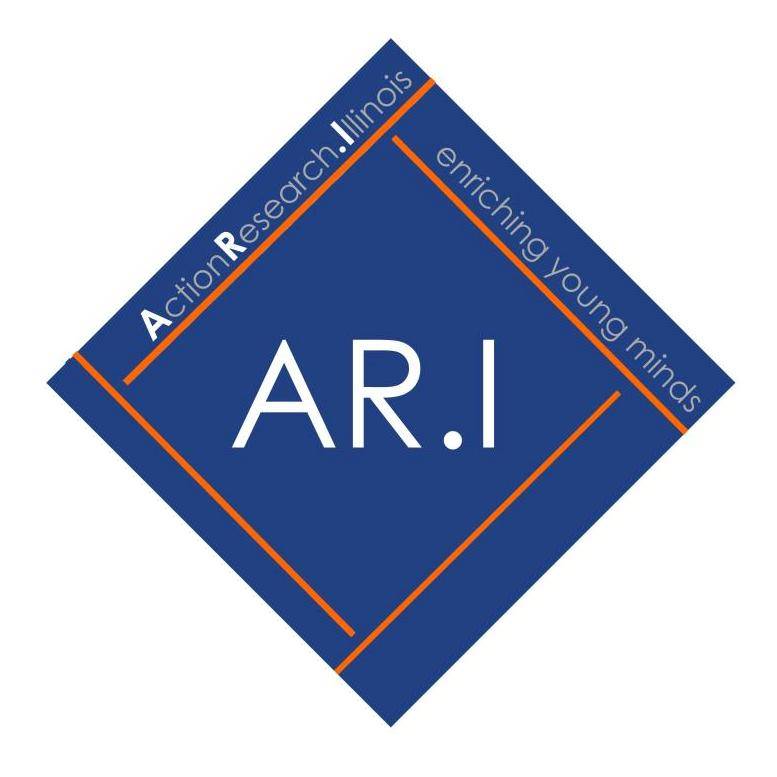
Every Thursday night about a dozen students from the University of Illinois go to jail. Luckily for the reputation of the university these students aren’t there to be processed; they are there to make art, to make music, and to learn. They come from a variety of backgrounds from music and art education, to psychology, even engineering. About the only thing that they all have in common is that each of them has enrolled in a course through the College of Fine and Applied Arts, FAA391: Arts Experiences with Incarcerated Youth. Most of the UIUC students simply refer to the class as the “JDC Arts Project” because it meets at the Champaign County Juvenile Detention Center (CCJDC). The project was started last fall by one music education student and has grown into a powerful example of how the university and the community can work together to make a difference in the lives of young people.
Alex Moroz, U of I alumnus and music teacher at the Cook County Juvenile Temporary Detention Center, began the JDC arts project during the first semester of his senior year.
I started the program for a few reasons. The main reason was because I wanted to continue exploring education in corrections since I had previously taught incarcerated adults at the Decatur Adult Transition Center. After working with adults for several months, I wanted to work with incarcerated children within my own community. The Champaign County staff was incredibly welcoming to me, so I chose to volunteer there. As a pre-service teacher, teaching at the JDC gave me an opportunity to experiment in the classroom and put my philosophies to practice.
 At the end of that first semester Alex was leaving the C-U community so he asked Dr. Jeananne Nichols, the U of I Assistant Professor of Music Education who had been supervising Alex’s teaching at the JDC, how the program might continue after him. Nichols helped him to write a grant proposal for Action Research Illinois that would fund the expansion of his efforts into an undergraduate service-learning course. The grant was awarded and in the spring of this year the class became official.
At the end of that first semester Alex was leaving the C-U community so he asked Dr. Jeananne Nichols, the U of I Assistant Professor of Music Education who had been supervising Alex’s teaching at the JDC, how the program might continue after him. Nichols helped him to write a grant proposal for Action Research Illinois that would fund the expansion of his efforts into an undergraduate service-learning course. The grant was awarded and in the spring of this year the class became official.
Nichols assumed responsibility for the project and has worked hard to reach out to the campus and community. She comments:
I am delighted at how well the project has been received, and I’m proud of the community oriented practices among the leadership, U of I team, JDC staff, and the youth themselves. We all connect well and that ethos threads its way through everything we do. My hope is that the JDC project can become a model program that would inspire anyone who wants to do community oriented work that respects the institutions they’re hoping to serve.
As the course title mentions, this program is about experience. Many traditional arts programs focus on skill development, such as learning to paint landscapes or how to play the clarinet. Those types of activities are wonderful but they don’t work well at the CCJDC. The average sentence for a youth in the CCJDC is between 3 and 4 weeks, which is hardly enough time to master a complex skill. Instead, the U of I team designs and facilitates self-contained arts experiences, providing two new experiences every week. This isn’t your typical teacher-at-the-front-student-in-a-chair kind of setting. More often than not you’ll find the youth, university team, and the JDC staff all participating equally in each experience.
From drum circles, to painting self-portraits, to remixing beats using computer software — everyone has a say in how the activities progress. In fact, the U of I team works hard to ensure that each activity is designed around the idea that the youth have a chance to construct their own meaning through experience. When asked how she felt about the project Marla Elmore, one of the assistant superintendents at the JDC, summed it up this way:
The basis of the program is primarily experiential for both our youth and the U of I students. Our youth get to experience many aspects of art and music that they probably are not exposed to in their every day life; nor is it something that most of them pursue at school — for many reasons. The UIUC students get the experience of working with youth that most of them would not usually encounter in a typical career path for art/music educators.
Elmore’s observation that art/music educators do not usually encounter “at-risk” youth in their careers is understandable. School music and art programs are usually electives that, for a variety of reasons, are not chosen by youth considered “at-risk”. As a service-learning course, the JDC Arts Project seeks to address this gap by introducing pre-service teachers and future community leaders to youth who tend to occupy the margins of school and society. The premise of service-learning is that students form a partnership with a community organization and work with its members to identify and meet a need.
The organization benefits from the expertise of the students and the students benefit from working in the real world engaging real world problems. As Elmore explains, the project “helps the UIUC students to understand that our youth are just kids, troubled yes, but at heart just kids.” Alex Moroz emphasizes the importance of the JDC project to his professional preparation:
My involvement with this program has had a profound impact on me as an educator. Working with the juveniles was especially impactful because I saw what music education could be if it was approached nontraditionally. I learned that music is not only something that’s beautiful, but it’s something that can be used to connect people and form relationships. The most important part of a classroom is not the content being taught – but the bond between teachers and students. This is especially true with youth considered at-risk. I don’t think that I would have realized this to the extent I do today without my experiences with this program.
The youth in custody gain just as much in their weekly interactions with the UIUC students. Jenna Weidenbenner, a graduate assistant for the project and a current doctoral student in psychology, remarked:
Adolescents are, developmentally, at a point where they’re trying to make sense of who they are within the world. Youth at the JDC have the added struggle of trying to reintegrate their ‘bad side’ with their overall sense of self and purpose- talents, hopes, and dreams. The JDC Arts Project, as based in restorative practices, really empowers youth to see themselves as more capable and more creative than they might otherwise; we plant the seeds for youth to continue re-inventing themselves in ways that align who they are with who they need to be to play a positive role in the community.
Restorative practices, and the ideas of balanced and restorative justice, stand in contrast to the traditional punitive view of criminal justice. Restorative justice seeks to repair harm done between the offender and the victim, and the offender and the community. Assistant Superintendent Elmore would like to “dispel ideas that the juvenile justice system is only punitive.” She continues, “I like to think that when the youth are detained we have a unique opportunity to bring services, and I use that loosely to include therapeutic as well as educational, to both the youth and their families.”
In addition to the artistic value of the art and music activities themselves, the JDC Arts Project provides incarcerated youth with opportunities to develop positive social bonds with peers and adults. The traditional school system has failed many of these students, and they often have difficulty relating to and working with authority figures. The experiential nature of this program redefines traditional classroom power structure. The U of I team members sit next to the youth, actively participating with them on the same level, helping each other to learn. Social bonds form in that learning process, and respect is earned on both sides of the partnership. Groups of youth work with groups of U of I students on collective activities, sharing materials and vision for the creative process. When an activity begins a few of the youth may seem guarded and standoffish. As time goes by those same youth begin to smile and verbally open up, they start to participate fully in the experience, and when it is time for them to go back to their cells they often leave singing, beat-boxing, or dancing.
There may be those in the community who question the value of such a program. After all, haven’t these kids been arrested? Yes, but the people involved in this project, from the UI team to the JDC staff, believe that thoughtful arts programing is not a reward for bad behavior, but part of the effort to reduce it. A recent report on recidivism among youth incarcerated in Illinois states, among a lot of other interesting data, that 86% of youth who serve time will be rearrested within three years. The study ends with the following conclusion:
Although these recidivism rates are high, this should not be interpreted to mean that IDJJ is failing. Short stays combined with a lack of resources make it difficult for IDJJ to provide the services and programming youth may need. In the current economic climate, IDJJ does not have the resources to and cannot be reasonably expected to affect positive change in these individuals. Further, with high caseloads and few juvenile-specific parole officers, implementation of IDJJ’s proposed aftercare program is challenging. While this study was unable to account for programming and services needed and received, other studies have indicated that aftercare programming is crucial to successful community re-entry and reduction in recidivism.
The U of I team and the detention center staff entertain no illusions that the JDC Arts Project will unilaterally solve all the problems of juvenile justice. Rather it offers incarcerated youth a chance to engage successfully with music and art and creates social situations where the youth are able to interact positively with peers and adults. These experiences can empower the youth to make connections with the community and to seek out caring organizations who will support them in breaking the cycle of incarceration.
Champaign-Urbana is fortunate to have a plethora of motivated and socially-minded organizations, including a university striving for effective community service. According to Dr. Nichols:
The campus has a strong interest in engaging with our communities in working to make things better. From Learning In Community, to Action Research Illinois, to the Office of Public Engagement, there is a commitment on the part of the university to create opportunities for service-learning that are genuinely responsive to the needs of the CU area. The JDC Arts project is but one effort of many and we are all searching for ways to connect. The community should feel empowered to say ‘We have something we’d like to work with you on’.








